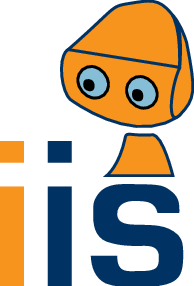research:projects
Differences
This shows you the differences between two versions of the page.
| Both sides previous revision Previous revision Next revision | Previous revision Next revision Both sides next revision | ||
|
research:projects [2020/03/05 11:59] Alejandro Agostini |
research:projects [2020/03/05 13:17] Alejandro Agostini |
||
|---|---|---|---|
| Line 3: | Line 3: | ||
| ===== Current Projects ===== | ===== Current Projects ===== | ||
| - | **SEAMLESS LEVELS OF ABSTRACTION FOR ROBOT COGNITION** - (FWF Lise Meitner Project, 2019-2021): The project seeks to develop a robotic cognitive architecture that overcomes the difficulties found when integrating different levels of abstractions (e.g. AI and robotic techniques) for task plan and execution in unstructured scenarios. The backbone of the project is a unified approach that permits searching for feasible solutions for new task execution at all the levels of abstractions simultaneously, where symbolic reasoning is no longer disentangled from the physical aspects they represent. | + | **SEAMLESS LEVELS OF ABSTRACTION FOR ROBOT COGNITION** - (Austrian Science Fund (FWF) - Lise Meitner Project, 2019-2021): The project seeks to develop a robotic cognitive architecture that overcomes the difficulties found when integrating different levels of abstractions (e.g. AI and robotic techniques) for task plan and execution in unstructured scenarios. The backbone of the project is a unified approach that permits searching for feasible solutions for new tasks execution at all the levels of abstractions simultaneously, where symbolic reasoning is no longer disentangled from the physical aspects they represent. |
| **OLIVER** - Open-Ended Learning for Interactive Robots (EUREGIO IPN, 2019-2022): We would like to be able to teach robots to perform a great variety of tasks, including collaborative tasks, and tasks not specifically foreseen by its designers. Thus, the space of potentially-important aspects of perception and action is by necessity extremely large, since every aspect may become important at some point in time. Conventional machine learning methods cannot be directly applied in such unconstrained circumstances, as the training demands increase with the sizes of the input and output spaces. | **OLIVER** - Open-Ended Learning for Interactive Robots (EUREGIO IPN, 2019-2022): We would like to be able to teach robots to perform a great variety of tasks, including collaborative tasks, and tasks not specifically foreseen by its designers. Thus, the space of potentially-important aspects of perception and action is by necessity extremely large, since every aspect may become important at some point in time. Conventional machine learning methods cannot be directly applied in such unconstrained circumstances, as the training demands increase with the sizes of the input and output spaces. | ||
research/projects.txt · Last modified: 2024/02/19 12:24 by Antonio Rodriguez-Sanchez

